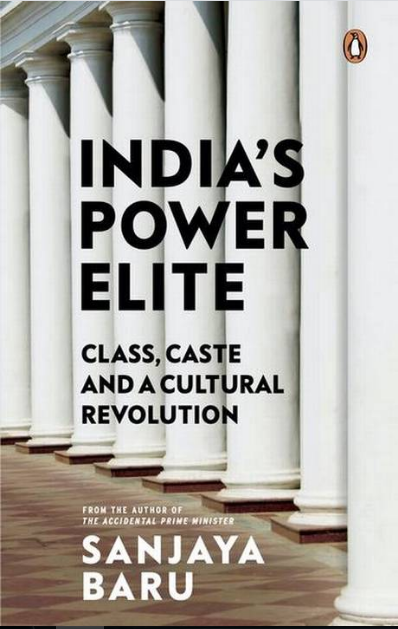The received wisdom currently is that Prime Minister Modi has no interest in adjusting or co-opting the existing elite in Delhi unlike his predecessors including Atal Bihari Vajpayee. By coining phrases like “Lutyens’ Elite” and “Khan Market Gang”, Modi has drawn a very clear line between himself, representing a subaltern upsurge, versus the patronage-driven cosmopolitan elite in Delhi. According to Baru, a “mix of Hindu nationalism and anti-elitism has become the basis of a new phase in Indian politics that many believe defines what Modi has termed as ‘New India’.”
‘India’s Power Elite: Class, Caste and a Cultural Revolution’ review: The dismantling of the Khan Market Gang and the rise of a new elite
‘India’s Power Elite: Class, Caste and a Cultural Revolution’ review: The dismantling of the Khan Market Gang and the rise of a new eliteon Apr 12, 2021

The ascent of Prime Minister Narendra Modi in the national arena has disrupted politics as we knew it. The dominance of Modi and that of the Bharatiya Janata Party over political discourse and elections, both national and Assembly, sometimes winning a State even when the party had no footprint there, has dismantled coalition politics that was prevalent over the last 30 years. Political commentators and sociologists have been exploring ideas and templates to capture the nature of the changes that this electoral dominance has engendered.
On the electoral side, political scientists claim that India has now entered a phase where the BJP is in a position once occupied by the Congress. In India’s Power Elite, Sanjaya Baru tries to capture not just the churn brought about by the 2014 general election and the decline of the Congress in the political sphere, but its impact on the social and cultural landscape, and the nuts and bolts that make up India’s elite.
Baru examines all these concepts in detail and finds that a new elite is being constructed or that the old elite is being infused by a large population of the new elite. Looking at theoretical constructs on what constitutes elitism, taking into its sweep writings by C. Wright Mills, Antonio Gramsci, M.N. Srinivas to Andre Beteille, this book is a bird’s eye view on the larger question of the construction of elites, the social classes they are drawn from, access to education and whether these theories can be applied to India.
Read | Anuja Chauhan’s new novel may be a whodunnit, but its people are its pleasure, as usual
Sangh Parivar’s plan
It is also about the larger drive currently underway by the Sangh Parivar of establishing a certain ideological hegemony riding on not just electoral victory, state patronage and capture of government institutions, but also by deploying diffused influences like the media, celebrities and the Indian diaspora in other countries.
For this, Baru does not take the year 2014 (as many have done in countless opinion pieces) as the watershed. He goes back to immediate pre-independence India, and the seeds of the new elite that came into being post independence, political scientist Rajni Kothari’s Congress network, and the early outliers to this system. In India’s provincial capitals, spurred by the exigencies of electoral politics, the vernacular elite was trying to push back. This led to the rise of a new wealthy class in Andhra Pradesh, and the birth of the Telugu Desam Party (TDP). The big disruptions of the economic liberalisation project of 1991 and the implementation of the Mandal commission recommendations, in unleashing the power of the Other Backward Classes as a power bloc, accelerated much of this change.
Baru refuses to see India’s elites as a static category — there is constant churning and upward and downward mobility. Caste, class, education and access to economic resources, patronage by the state and emergence of electorally significant caste groups have to be seen in totality. He reveals the complexity of this process while also trying to find an Indian template to explain the phenomenon. One of the first such books off the block, it will, hopefully, encourage more work in this field.
Caste and a Cultural Revolution
Frontlist
Frontlist India
Frontlist Latest
Frontlist Latest news
Frontlist Latest Update
Frontlist News
India’s Power Elite: Class
Latest news
Nistula Hebbar
Sanjaya Baru



.jpg)






.jpg)

.jpg)
.jpg)
.jpg)
.jpg)
.jpg)










Sorry! No comment found for this post.